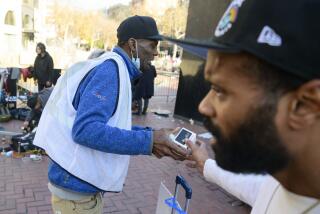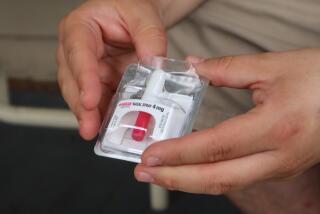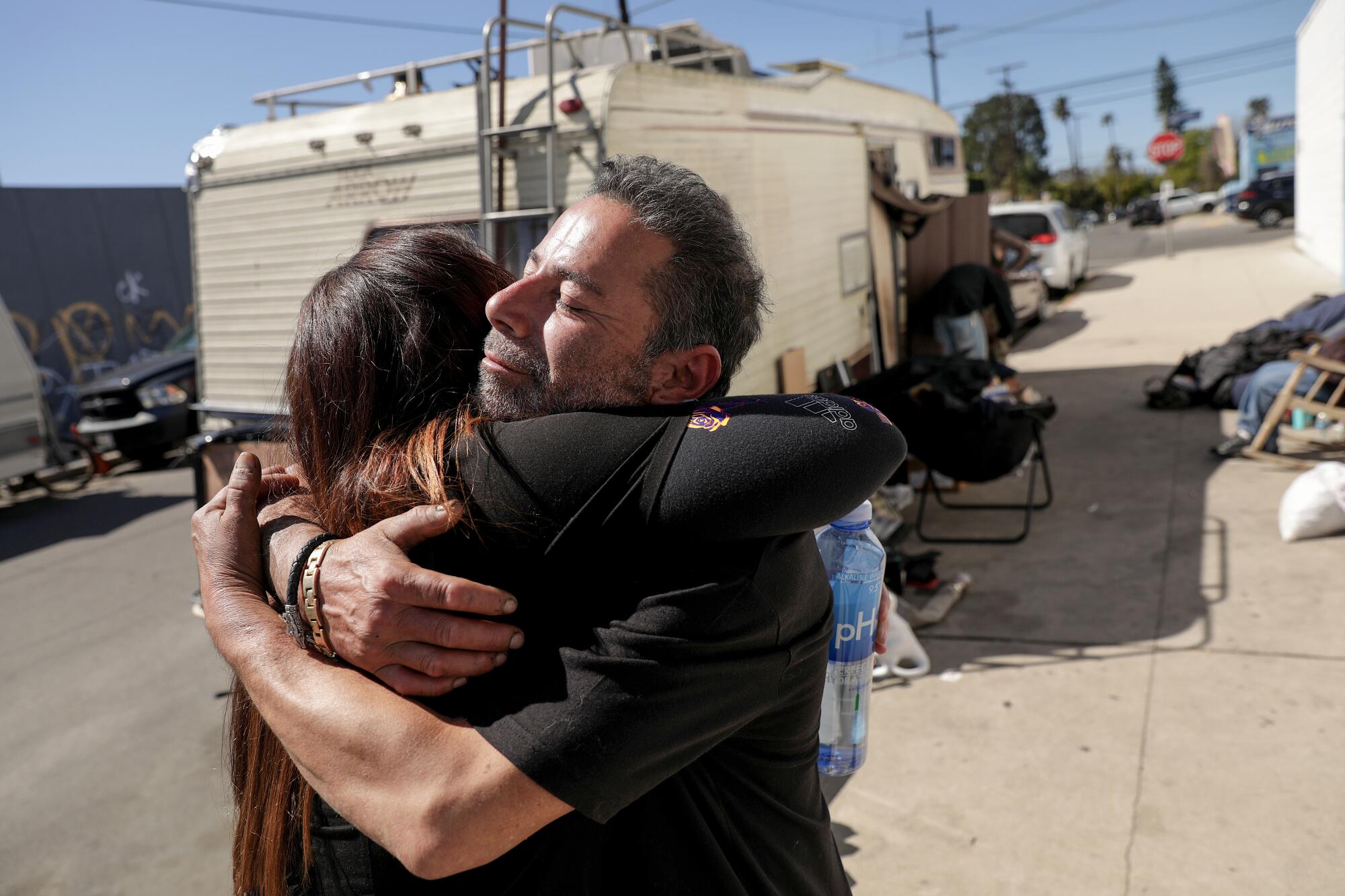
- Share via
His friend was barely breathing when Manny Placeres saw him being dragged out of a tent near a freeway onramp. At first he thought someone nearby was shouting “Freeze.”
“What I was really hearing was ‘breathe,’” Placeres recounted.
Placeres jumped off his bicycle and tried everything he could think of to revive the man. Nothing worked. As others panicked and shouted, Placeres pulled the man onto his lap and held him as his lips went blue.
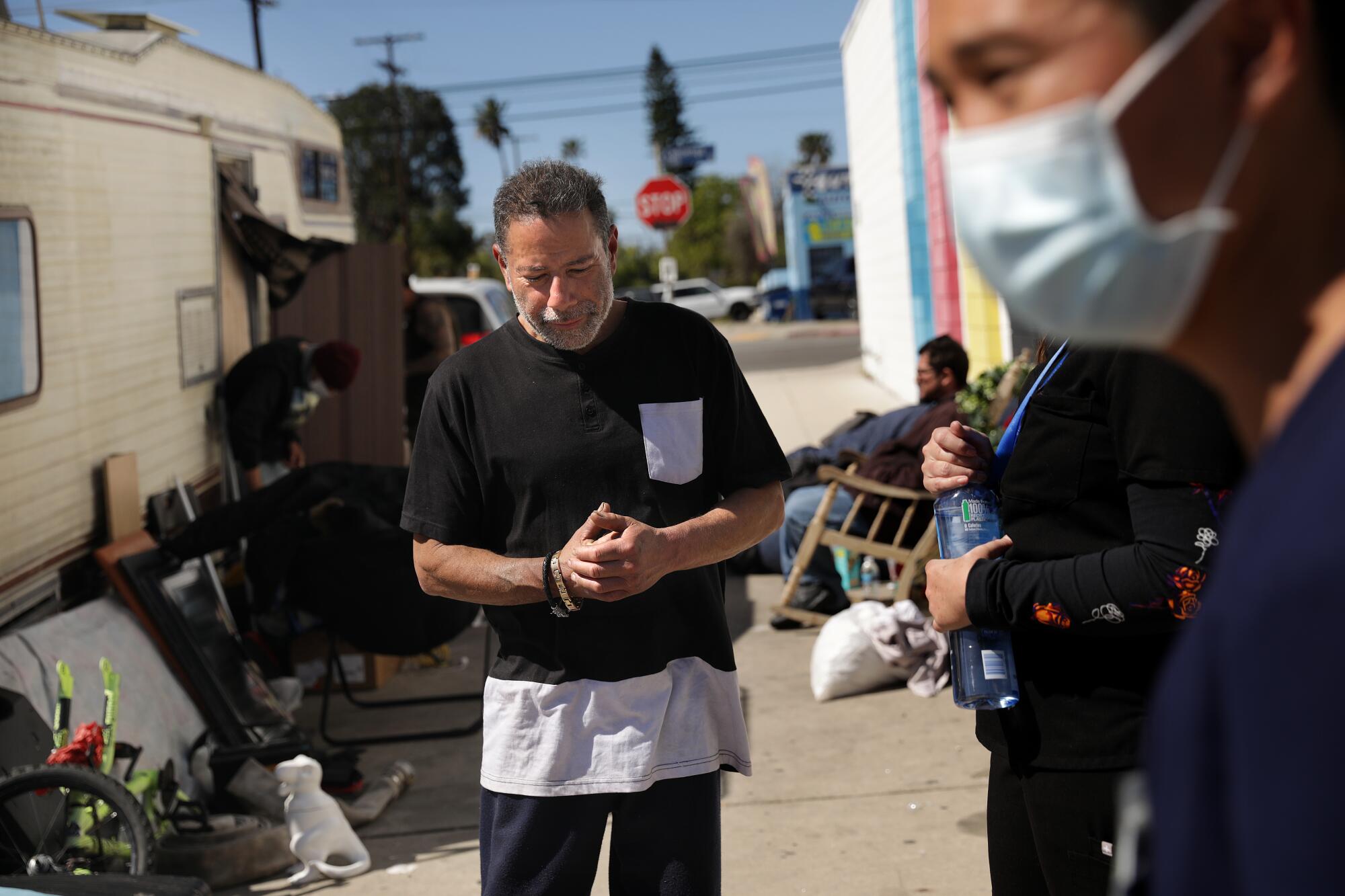
It was a fentanyl overdose, Placeres learned. His friend died in his arms.
Placeres, 58, was wrestling with that memory when a nurse approached him one day at his RV in a Studio City encampment, offering him a white box of a medicine that could undo an opioid overdose.
Now, Placeres said, he has rescued people again and again with that medicine in hand. “What a change of mentality that is,” Placeres said, “to be able to do that.”
Deaths from drug overdoses have surged during the COVID-19 pandemic, to roughly 100,000 lives lost across the country over a year, according to data from the Centers for Disease Control and Prevention. Roughly three-quarters of those deaths were tied to opioids, the bulk of them synthetic ones such as fentanyl.
Across the country, health officials and community groups are trying to combat the crisis with naloxone, a medication that can block the effects of opioids. It can be injected or administered as a nasal spray called Narcan, a brand name that has become a synonym for saving lives.
Even before the pandemic and the ensuing surge in overdoses, the CDC lamented that too little naloxone was being dispensed by pharmacies in much of the country. In L.A. and San Francisco, researchers found that among people who use drugs, Black and Latino people were less likely to have gotten naloxone.
So Los Angeles County decided it needed to expand its reach. Health officials set a goal to distribute 50,000 boxes of the medicine by this August, putting 100,000 doses of Narcan into the hands of people like Placeres. The effort began last summer.
They have set up free vending machines for people exiting L.A. County jails; handed Narcan out to community groups; given boxes to the Los Angeles Homeless Services Authority and other county departments; and sent Department of Health Services medical teams out with Narcan on their rounds at encampments.
“Morning! Medical team!” registered nurse Linda Leimer called out on a brisk Monday morning as she approached a line of tents along Aetna Street in Van Nuys.
Emergency medical technicians fanned out on the street, offering bagged sandwiches and a carafe of coffee. At a makeshift shelter draped with blue tarps, Leimer taught someone how to use Narcan.
“Put this all the way up their nose and spray,” she instructed. “Three minutes later, do it again. By that time, you’ve already called 911. Keep using it until they come back.”
A woman nearby scoffed at the idea, saying she didn’t use drugs. “I know, hon,” Leimer replied. “But what if somebody in the tent next to you does?”
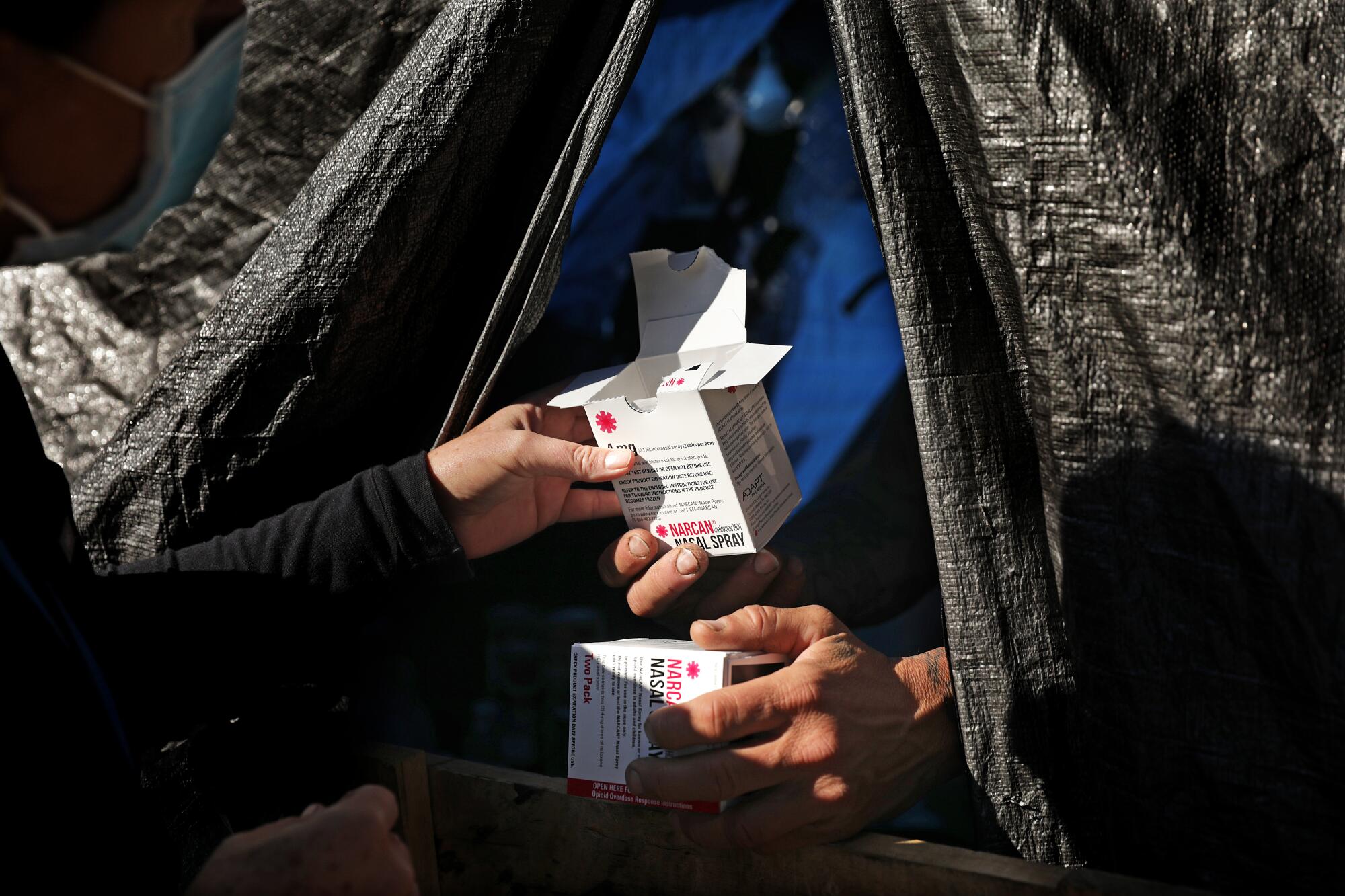
Terry Mason Kendrick greeted the county team from a chair stationed on the sidewalk. When an EMT asked him what he had heard about the opioid epidemic, Kendrick replied dryly, “I like to drink vodka.”
“Fentanyl — that stuff is nasty,” the 68-year-old said. “They don’t even know where they’re at.”
Kendrick said he had administered Narcan twice before. The team brought him a few more boxes. “That’ll save somebody’s life,” Kendrick said with satisfaction, setting the boxes next to him on a table.
“That’s why I want you to have it!” Leimer replied.
Tent by tent, the Department of Health Services team checked in on the people bedding down on the street, asking whether they had any medical needs. If someone seemed to be sleeping, Leimer watched closely from outside their tent, making sure she could see the reassuring rise and fall of their chest before moving on.
Fifty thousand units of Narcan is the biggest allocation of the medication that the California Department of Health Care Services has made to any government or community organization in the state. The L.A. County effort, dubbed LA50K, is meant to dramatically bolster the amount of Narcan getting out to residents, using the same systems that already reach and serve vulnerable people on the streets.
“We started to normalize it. Just like first aid kits, food, clothing — we’re just treating it like part of a care supply to be distributed,” said Shoshanna Scholar, director of harm reduction and community based diversion in the Office of Diversion and Reentry at the L.A. County Department of Health Services.
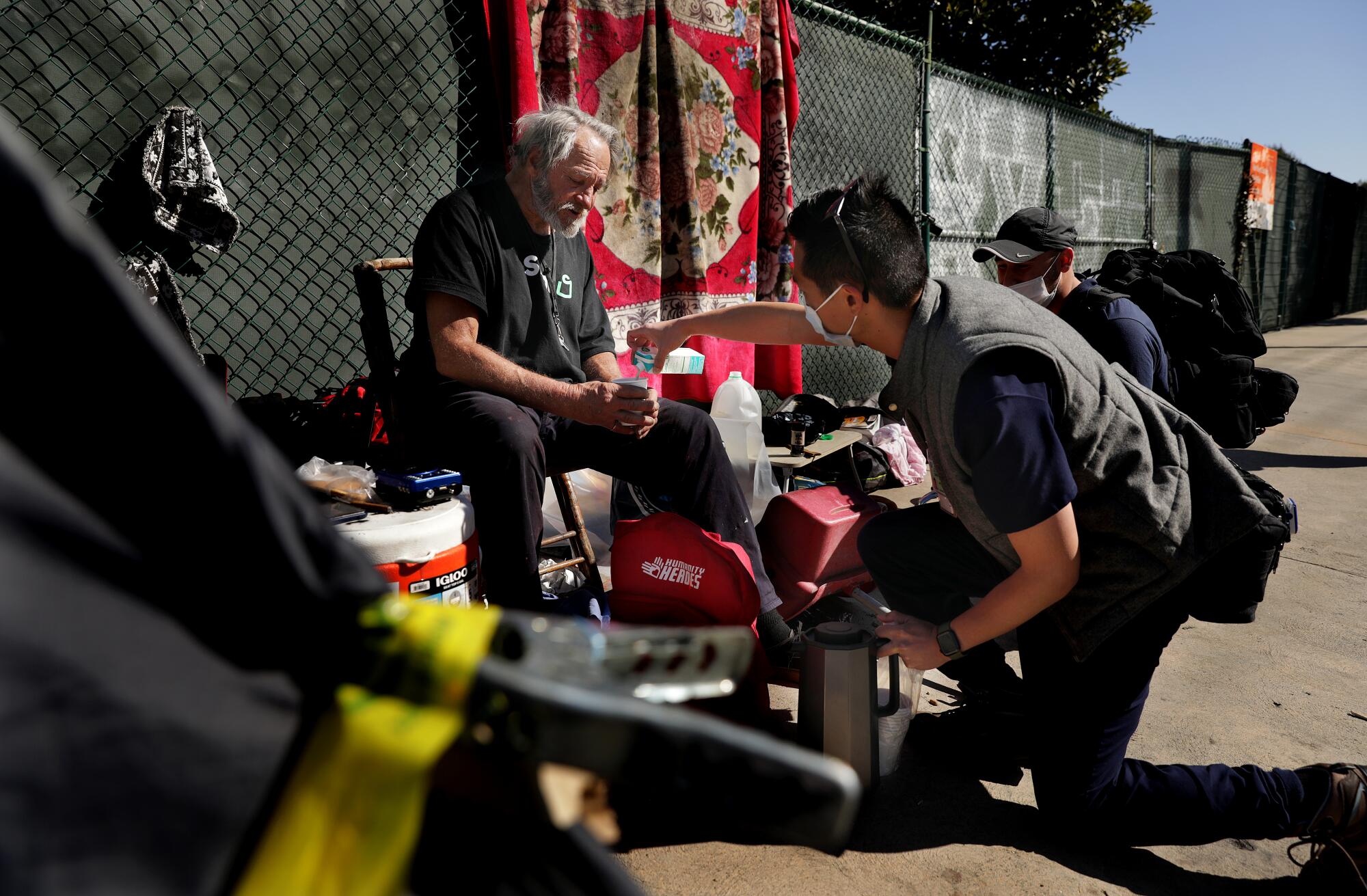
By the middle of March, the county had already hit its goal, handing out more than 54,000 units through the effort since summer 2021. (L.A. County purchased additional doses to bolster what it was allocated by a state program.) Program officials had gotten reports of more than 5,800 instances in which it was used during an overdose — and they believe the numbers were undercounted during the Omicron surge.
For community groups, the new program shifted their thinking from “‘We’re always kind of trickling it out because we’re always worried about running out’ ... to being able to concentrate on handing the stuff out in volume,” said UC San Diego associate professor Peter Davidson, who has been assessing the county initiative.
That increased volume, he said, is crucial to preventing deaths. “When an overdose occurs, you want there to be naloxone nearby — and for everyone around to know how to use it,” said Davidson, who works in the division of infectious diseases and global public health at UCSD.
The L.A. County effort is fairly new, but naloxone isn’t. The drug was invented decades ago, but was initially used chiefly in emergency rooms and ambulances. Around the turn of the millennium, syringe exchanges and other community programs in the U.S. began to provide it to people who use drugs.
Scholar said that for a long time in Los Angeles, syringe exchanges were “really the only viable community access points there were.”
Handing out naloxone more freely raised alarms, among some critics, that people who use drugs might be more likely to take risks. Instead, studies in San Francisco, Los Angeles and New York City found that drug users who had been trained to save people with naloxone ended up cutting back on their drug use.
Having naloxone “doesn’t really enable anything — other than staying alive,” Davidson said.
With the rise of opioid deaths, states ushered in new laws to allow naloxone to be more easily dispensed to the public. The California Department of Health Care Services has provided roughly 1 million units of Narcan to government agencies, hospitals and community groups through its Naloxone Distribution Project in the last four years at a cost of $72 million, according to state records.
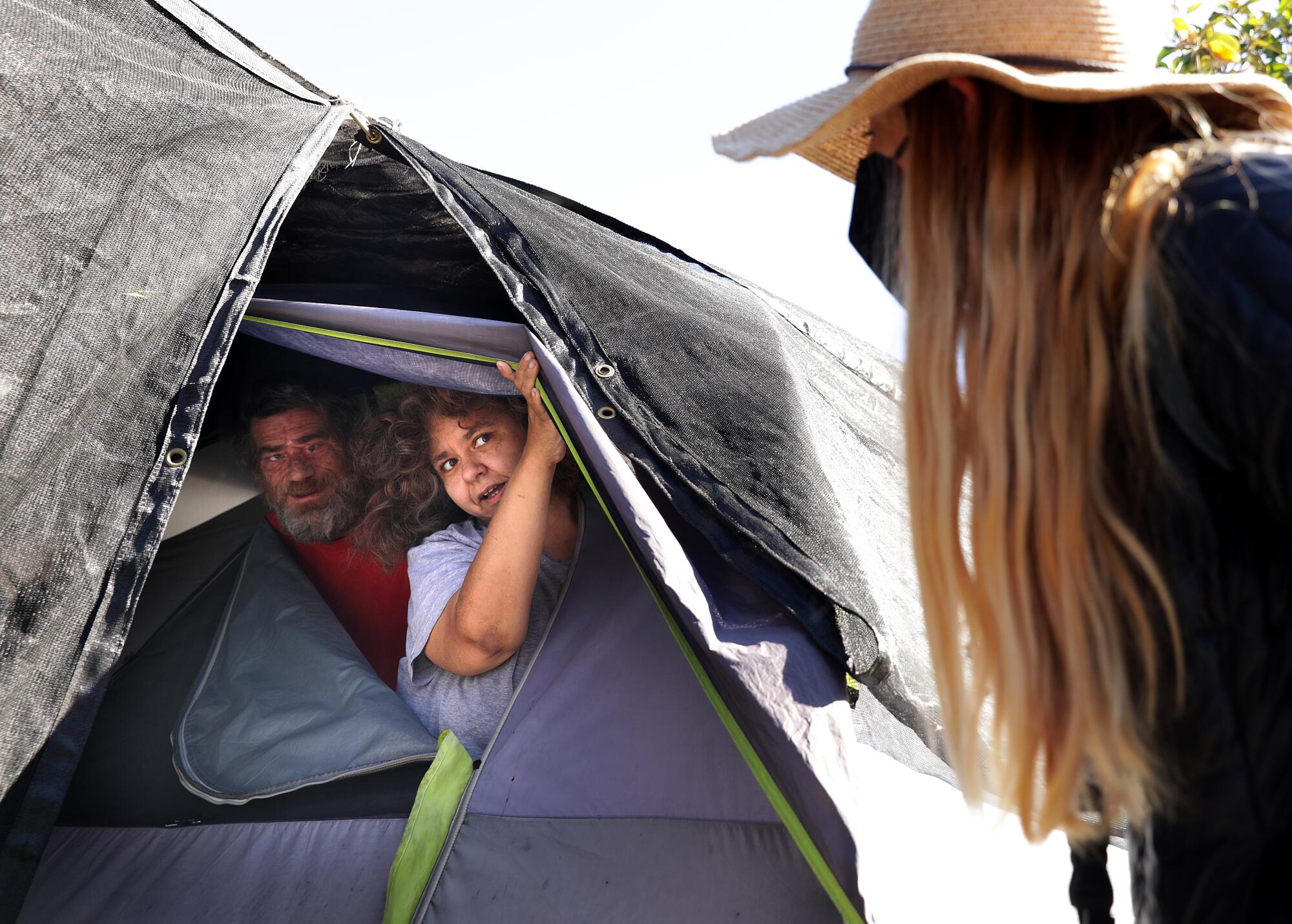
Despite the growing embrace of naloxone — including by police agencies — stigma and misinformation persist around the medication, harm reduction advocates say.
“People worry that carrying naloxone indicates them as someone who accepts opioid use or uses themselves,” said Shannon Knox, who oversees naloxone distribution for Community Health Project LA, one of the groups involved in LA50K. “A lot of people are afraid to be associated with opioids at all.”
But the fear of that association, she said, “is killing people.”
The county effort also aims to get Narcan into neighborhoods that are distant from the syringe exchanges that were first to hand out naloxone to clients, reaching corners of L.A. County far removed from skid row and Hollywood.
Vending machines available to people exiting the jails, for instance, supply Narcan to people heading home to areas including Lancaster, Palmdale, Pomona and Huntington Park — areas that have also been hubs for overdose deaths, county data show. From January 2019 to the end of June 2020, nearly half of deaths among people released from L.A. County jails were opioid overdoses, according to the health services department.
Reaching everyone is a matter of life and death. One study, conducted before the L.A. County program launched, found that among people who injected drugs in L.A. and San Francisco, white people were much more likely to have recently gotten naloxone than Black and Latino people. After the pandemic hit, rates of overdose deaths surged more among Black people than white ones, another recent study found.
Fentanyl seems to have hit Black people especially hard because they are more heavily represented among the older cohort of people who use drugs, said Ricky Bluthenthal, a professor in the department of population and public health sciences at USC’s Keck School of Medicine.
Normally, older users are the safer ones, Bluthenthal said. “They use less drugs. They know how to get syringes. They know how to manage withdrawal,” he said. “If you’ve used heroin for 30 years, you know the deal.”
But because fentanyl is so much more powerful, “it’s catching these older folks who had been able to use more or less safely for many years,” he said. “And then we also have this problem of who is getting naloxone.”
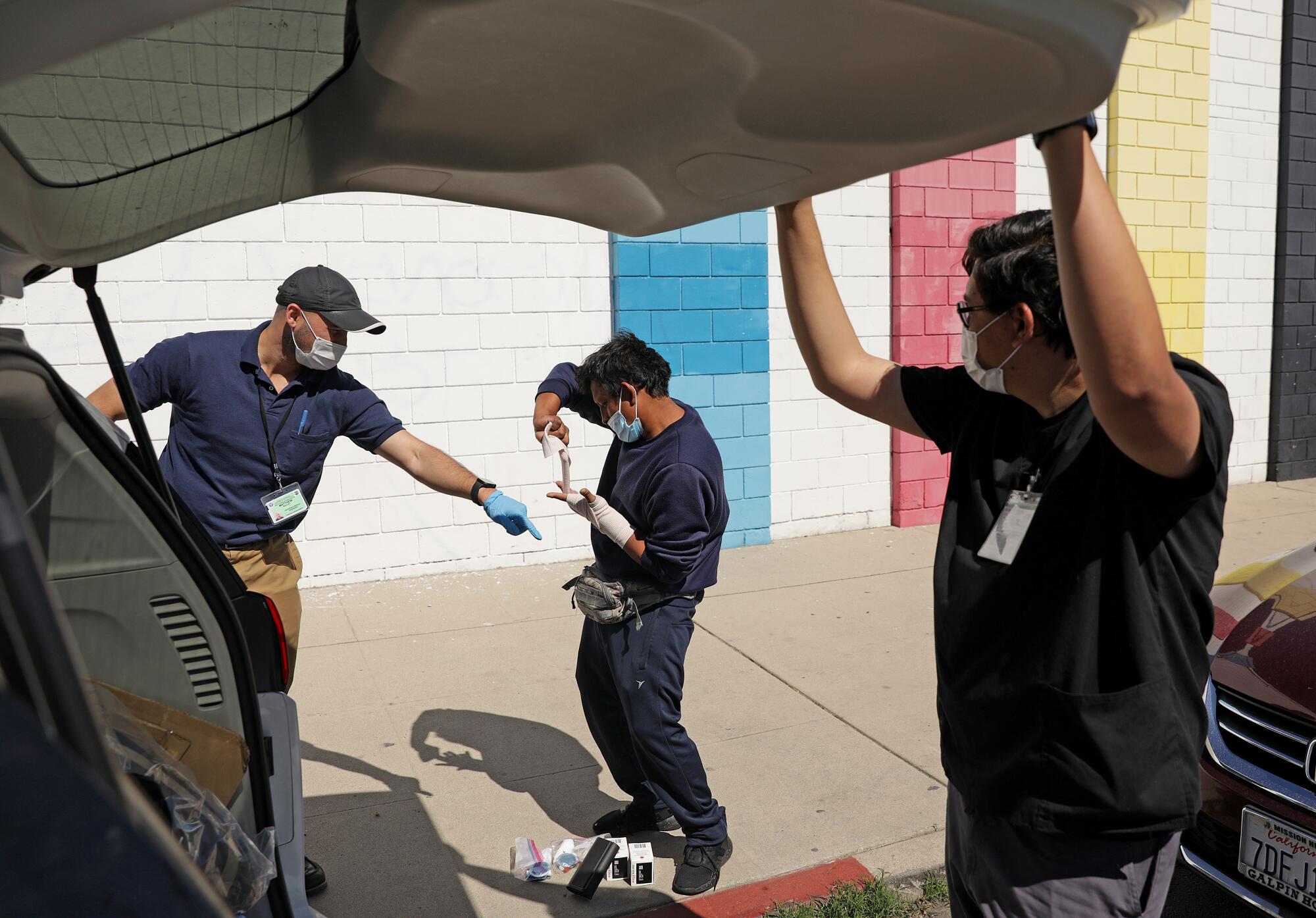
Bluthenthal and his colleagues also found, in their earlier study of people who use drugs in San Francisco and L.A., that homeless people were less likely to have the medication at that time than housed people.
In L.A. County, drug overdoses have been the leading cause of death for unhoused people for years, with growing numbers of deaths caused by fentanyl.
“Every other day I see an ambulance coming by and leaving,” said Robert, a man living in a tent near the Metro stop in North Hollywood, who declined to give his last name. “It’s too often, ambulances going back and forth. Your heart goes up and down, seeing that another human being is about to die.”
When Leimer and others from the Department of Health Services team stopped by his tent, Robert told them he had just used Narcan a few days earlier on a new guy who had arrived from Texas.
“Two of these, he didn’t wake up,” Robert said, holding up a white box. “I slapped him pretty good.”
“He didn’t like it when I slapped him,” he added. “But he’s alive.”
As more fentanyl has hit the streets, health officials have found that more naloxone has been needed to pull people out of overdoses. The team handed five boxes of Narcan to Robert, each holding two doses.
“Isn’t it kind of dangerous to use more than two?” Robert asked.
“No, it can’t hurt anyone in any way,” Sieglinde von Deffner, skid row coordinator for the health services department, assured him. Federal health officials have stressed that naloxone will not harm someone who is not using opioids, urging people to use it whenever an overdose is suspected.
Placeres, who relocated his RV to North Hollywood, said he has used Narcan to revive people seven times.
As others panic around someone overdosing, he administers a first dose of the spray, counts the minutes, then does it again if they have not yet revived. Then he pulls the person upright, quickly sitting them up straight.
“Every single time, their eyes pop wide open and they start freaking out, because you’re literally pulling them from the brink of death,” Placeres said. “As they’re knocking on heaven’s door, I pull them back.”
More to Read
Sign up for Essential California
The most important California stories and recommendations in your inbox every morning.
You may occasionally receive promotional content from the Los Angeles Times.
